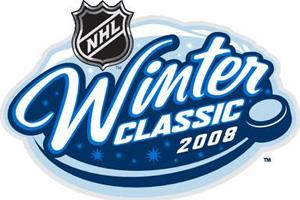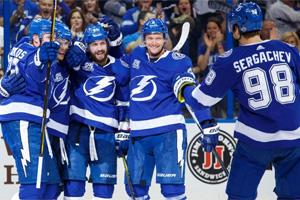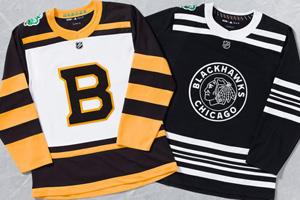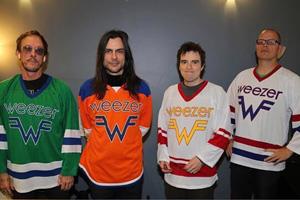I know, I know. New Year’s Day is supposed to be the sole province of college football for sports enthusiasts. Five games on tap, beginning with a 12 p.m ET mano a mano a mano of the Outback Bowl (Mississippi State vs. Iowa) on ESPN2 scheduled against the Citrus Bowl (Kentucky vs. Penn State) on ABC at 1 p.m. ET with the Rose Bowl (Washington vs. Ohio State) at 5 p.m. ET on ESPN. With forty-odd bowl games in 2018-19, only alumni of these various schools have anything more than a betting interest, especially now that a four-team BCS playoff (bowl championship series televised on December 29 and January 7, respectively) determines the national champion.
Why not sample an even faster-paced contact sport this year, if you haven’t already? The annual National Hockey League (NHL) Winter Classic will again be telecast on NBC (as well as TVA Sports and Sportsnet.ca in Canada) at 1 p.m. ET on January 1, 2019, featuring two of the signature “Original Six” franchises with the Chicago Blackhawks (est. 1926) hosting the Boston Bruins (est. 1924) in the equally historic and memory-laden Notre Dame Stadium fewer than 100 miles southeast of the Windy City before an anticipated sold-out crowd of 80,795 fans, which will make it the third-largest crowd ever for an NHL hockey game.

The NHL Winter Classic is the brainchild of current NBC president of sports programming, Jon Miller, who first conceived of the idea back in 2004 when he was one of the lieutenants of NBC Sports’ legendary chairman, Dick Ebersol. It took a serpentine assortment of corporate twists and turns at both NBC, and the NHL before the network finally telecast the first Winter Classic on January 1, 2008, before 71,217 screaming fans at Ralph Wilson Stadium as the hometown Buffalo Sabres beat the Pittsburgh Penguins in a sudden death shootout 2 to 1. Just as importantly, the TV audience numbers rivaled the daytime bowl games from the outset.
Miller was initially inspired by the live and televised successes of the so-called 2001 “Cold War” (3-3 tie) between the University of Michigan and the Michigan State University face-off in Spartan Stadium before the-then largest crowd in hockey history of 74,544 who cheered on the players to put on quite a show for an international television audience; as well as the 2003 Canadian Heritage Classic between the Montreal Canadiens and the Edmonton Oilers, telecast from the latter’s Commonwealth Stadium with special appearances by iconic former players Guy Lafleur, Wayne Gretzky, and Mark Messier. Montreal won 4 to 3 as the CBC broadcast drew nearly 3 million viewers or approximately 10% of Canada’s total population.

Much like the NFL’s Super Bowl, the NHL Winter Classic is a once-a-year made-for-TV extravaganza not to be missed. Hockey is indeed on the Mount Rushmore of professional sports in North America, along with football, baseball, and basketball, but just barely. For more than a century, it’s been Canada’s national pastime; and in the United States, it has slowly grown from an acquired taste in those parts of the country that experience four seasons to a 31-team growing concern (7 in Canada and 24 in the US) with franchises thriving in such warmer climes as Tampa Bay (currently the best club in the NHL), Nashville, Dallas, Las Vegas, and Anaheim.
This year the Chicago Blackhawks will be representing the Central Division of the Western Conference and the Boston Bruins, the Atlantic Division of the Eastern Conference. Both teams enjoy storied pasts with legendary players such as Bobby Hull and Bobby Orr, six Stanley Cups apiece, including recent championships for Chicago in 2009-10, 2012-13, and 2014-15 as well as Boston in 2010-11. For the 2019 NHL Winter Classic, Chicago is the odds-on underdog led by stars such as their captain, Jonathan Toews, and former NHL MVP (2016), Patrick Kane. Boston boasts its luminaries, including 6’9” captain, Zdeno Chára, and one of the premier two-way (offensive and defensive) forwards in the game, Patrice Bergeron.
All four major North American professional sports have now laid claim to one of the US’s signature holidays on TV. American viewers especially turn their full attention to Major League Baseball (MLB) on the Fourth of July along with cookouts and celebrating the country’s birthday. Thanksgiving has become synonymous with televising back-to-back National Football League (NFL) games, starting as far back as 1966 as a way to cultivate national interest. The National Basketball Association (NBA) followed suit a year later on Christmas Day with one coast-to-coast telecast, expanding to a double-header during the 1990s, before finally settling on a handful of noon-to-nighttime contests beginning in 2008.

The Winter Classic was thus conceived as part of a broader push by the NHL and its more marketing-savvy collaborator, NBC, to reinforce its traditional appeals to its core audience, expand its purview even further throughout the United States and elsewhere, as well as rebrand the sport as a hip international-oriented alternative for younger generations in both North American and the rest of the world. In the first instance, the Winter Classic is designed to evoke a back-to-the-roots ambiance with its outdoor setting and throwback uniforms. Most NHL players spent their childhoods skating on rivers, lakes, and open-air public rinks in Canada, the Northern US, Scandinavia and other parts of Western Europe, Finland, the Czech Republic, Slovakia, and Russia. Vintage tuques, sweaters, and additional old-timey apparel help define the Winter Classic as a kind of "Norman Rockwell On Ice" experience for players and fans alike.
The Winter Classic is now a bona fide holiday sports tradition for an estimated audience inching ever closer to ten million committed and casual hockey fans watching linearly on either conventional TV or streaming in the United States, Canada, and internationally. The NHL moved its headquarters from Montreal to New York City in 1989, launched the NHL Network with partner NBCUniversal in 2007, and has gone increasingly digital during the 21st Century in delivering an ever-expanding menu of telecast and online content to a growing fan base that skews male, upscale, and 12-54 overall (as well as being surprisingly strong among the coveted 18-34 group) on NHL.com, NHLNetwork.com, and all the major social media platforms.

One obvious indicator of the NHL’s evolving demographic profile and its new, young, hipper brand augmentation is the selection of Weezer (right), the LA-based alternative rock band, to headline the entertainment at this year’s Winter Classic. The group first gained fame in the early-to-mid-1990s and are popular with late-Gen-Xers and Millennials, in particular. Given the ebbs and flows of a musical career, Weezer is currently experiencing another high-water mark with a 2019 Best Rock Album Grammy nomination for their latest record, Pacific Daydream along with a prime-time booking on ABC’s Dick Clark’s New Year’s Rockin' Eve '19 with Ryan Seacrest before flying to their midday gig at the Winter Classic. Two weeks ago, Weezer was even the subject of a Saturday Night Live sketch featuring host, Matt Damon, and SNL regular, Leslie Jones, further underscoring the band’s Millennial appeal.
All told, the conventional wisdom about hockey used to be that it is the most exciting sport to watch live – which it arguably is – but it is much less compelling on television because of the rapid and unpredictable movement of the puck during a game. Back in the 20th Century, MLB shared the same problem with the erratic activity and velocity of the baseball, but those who televise both professional leagues have now solved this technical problem by incorporating an assortment of strategies and tactics, such as using more cameras (from 16 to 20 for a hockey game) and graphics enhancements (such as color coding the puck and occasionally highlighting its flight across the rink with a blue streak).
Even hockey novices are in for a treat if they choose to watch the exciting and explosive back-and-forth between the Chicago Blackhawks and the Boston Bruins in what is now the eleventh annual Winter Classic on NBC this New Year’s Day. Although it is hardly necessary, if the uninitiated would like additional details on the sport’s basics, Ed Grabianowski has written a brief but informative article entitled, “How Hockey Works,” for the website, HowStuffWorks.
So tune in, have fun, choose a side, don your team gear, and join 80,000+ live spectators braving the outdoor winter conditions at Notre Dame Stadium. Fire up the Zamboni. The players are warmed up and ready. Game on!